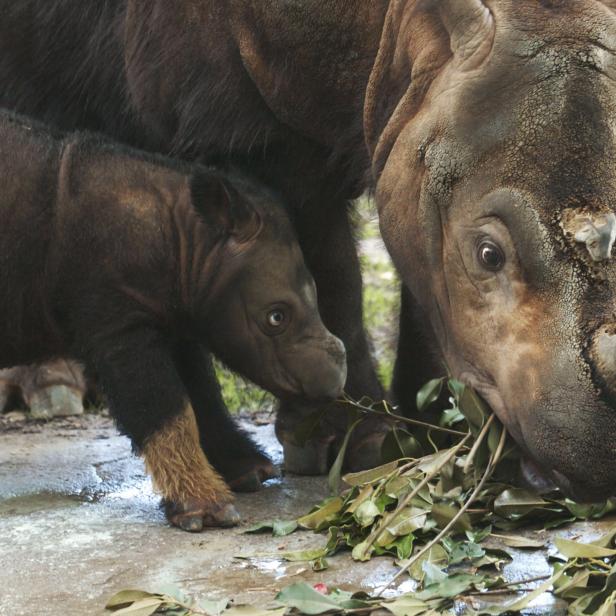
Mike Simons
It's a Girl! Very Rare Sumatran Rhino Born at Sanctuary
In a triumph for the conservation world, a rare Sumatran rhino calf has been born at the Sumatran Rhino Sanctuary in Way Kambas National Park, Indonesia.
In the past 15 years, just two captive females have reproduced, making this latest arrival a remarkable one.
Even more astoundingly is that the calf’s mother gave birth after suffering eight miscarriages in the last 17 years.
The significant event happened on March 24, at a time when there are fewer than 80 Sumatran rhinos left in the world. Those alive are living in small populations on the islands of Sumatra and Borneo, and this calf represents renewed hope for the critically endangered species.

Mike Simons
A three-week-old Sumatran rhinoceros stands in the water at the Cincinnati Zoo and Botanical Garden on August 19, 2004 in Cincinnati, Ohio.
Although the calf has yet to be named, its parents are Rosa and Andatu, and her birth takes the population of Sumatran rhinos at the sanctuary to eight. Bina, Ratu, Andalas, Harapan, and Delilah are the new calf’s fellow inhabitants.
The birth of the calf is part of the Indonesian government’s national rhino breeding program and it was hailed as “good news”.
“The Sumatran Rhino Sanctuary in Way Kambas National Park is the only place for the Sumatran rhino to breed naturally with the support of technology,” said Wiratno, Director General of Nature Conservation and Ecosystems, Ministry of Environment and Forestry.
The species once roamed as far away as the foothills of the Eastern Himalayas in Bhutan and eastern India, through Myanmar, Thailand, and south through the Malay Peninsula.
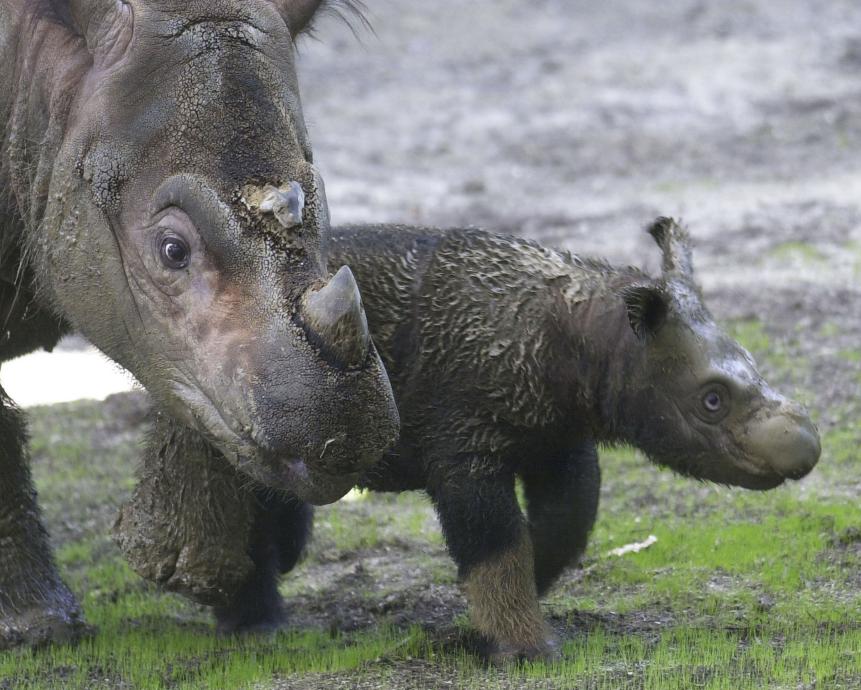
Mike Simons
Emi, a Sumatran rhinoceros walks with her three-week-old female calf at the Cincinnati Zoo in 2004.
Sumatran rhinos, the world’s smallest rhino species, and the only Asian rhino with two horns used to be found in plentiful numbers across Southeast Asia. They historically lived in dense tropical forests and had a varied diet that consisted of more than 100 plant species.
They are covered with long hair and are more closely related to the extinct wooly rhino than any other rhino species alive today. They’re born with a dense covering of hair that turns reddish-brown, and then sparse, bristly, and black when they age. They live between 35 and 40 years, and gestation lasts approximately 15 to 16 months, with cows giving birth to one calf every three years.
But due to habitat loss and fragmented populations, there is limited opportunity for the species to breed. Their numbers have also been decimated by poaching, which has killed more than 70% of the population over the past 20 years.
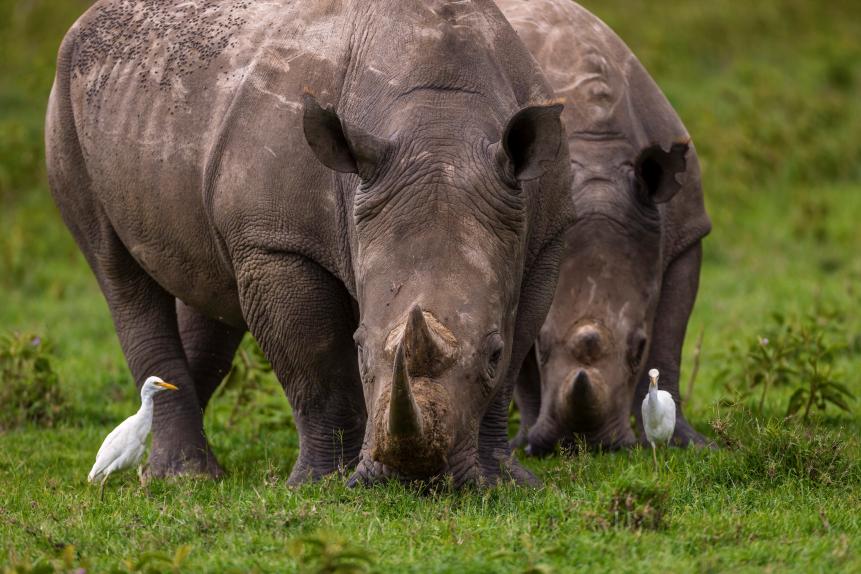
Ibrahim Suha Derbent
Two Sumatran rhinos feeding in Kenya.
In 2015, the species was declared extinct in the wild in mainland Malaysia; in 2019 Malaysian Borneo followed suit. Now, the rhinos only exist in areas where they are physically guarded by Rhino Protection Units and Wildlife Protection Units.
The new calf is the sixth to be born since intense efforts to breed the species began in the 1980s. That program, however, collapsed a decade later after more than half of the animals died without any calves being born. This recent initiative was launched in 2017 and is helping tackle the low rate of natural breeding among isolated females – which is often cited by experts as the cause of reproductive woes.
"Rosa's pregnancy represents new hope for this critically endangered species," Nina Fascione, executive director of the International Rhino Foundation, said. "This is a momentous occasion for a critically imperiled species.”













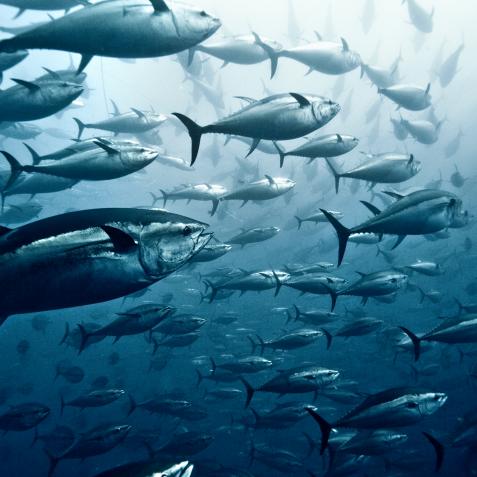

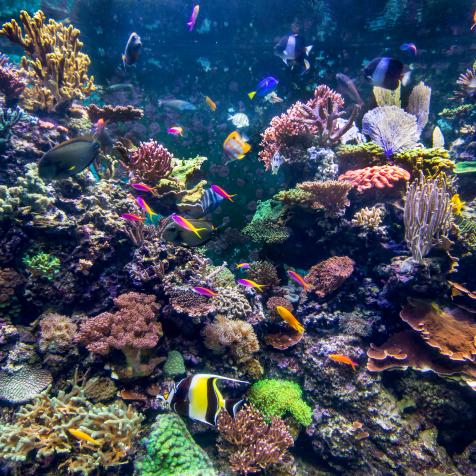


.jpg.rend.hgtvcom.476.476.suffix/1635892481978.jpeg)